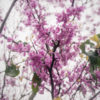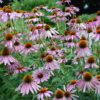Red-Berried Elder (Sambucus racemosa )
$15.00
Red elderberries have a rich and long history as an important food source for many peoples. It’s advisable to cook them before consumption though to remove the presence of cyanogenic glycoside and alkaloids, and we recommend checking out the chapter on elderberries in Samual Thayer’s “Nature’s Garden” to learn more (happy to lend it out to anyone interested!). They also serve as a favorite to birds and a host plant to some butterfly and moth species.
Plants are currently provided in gallon-sized recycled plastic pots donated to our nursery by community members.
Out of stock
Description
Why are We Planting This?
Ecological Gifts
Berries are loved by birds. Serves as a host plant (a type of plant critical to the lifecycle of a specific species) to some butterflies and moths.
Edible Gifts
The berries get an undeserved reputation as inedible. Red elderberries have a rich and long history as an important food source for many peoples. When appropriately prepared, they’re great. The roots can reportedly also be used in tea, but we haven’t ventured there yet personally.
Medicinal Gifts
Like other elderberry species, has a history of medicinal use. See below.
Read more about the ethnobotany of Red-Berried Elder and its history of medicinal uses at the fully-referenced Plants for a Future and the Native American Ethnobotany Database.
Additional information
| Sun | Full, Partial |
|---|---|
| Soil | Average, Dry |
| Height | 5'-12' |
| Bloom Time | June, May |
| Bloom Color | White |
| Native Plant Category | Trees, Shrubs, and Vines |
| Special Features | Edible, Good for Wild Birds, Host Plants, Medicinal |




